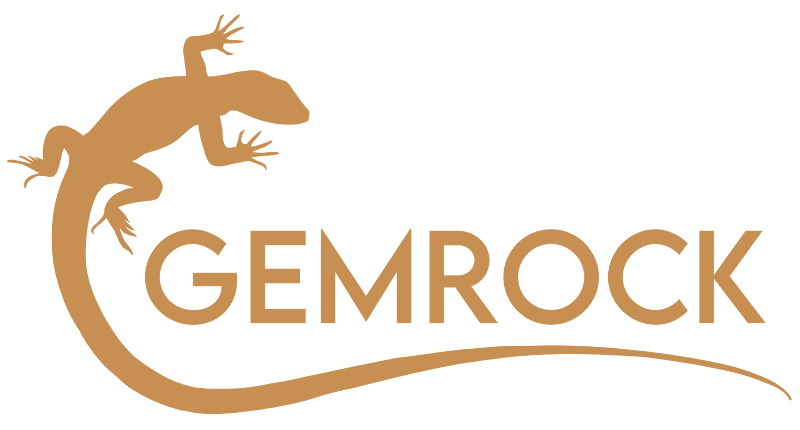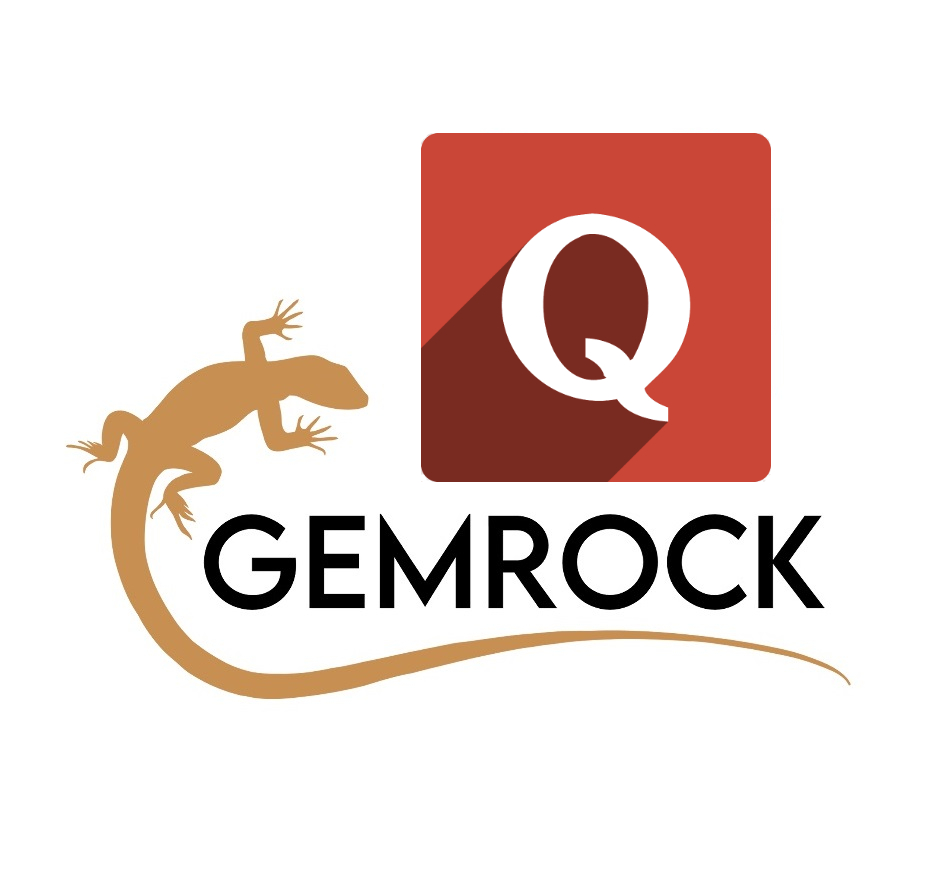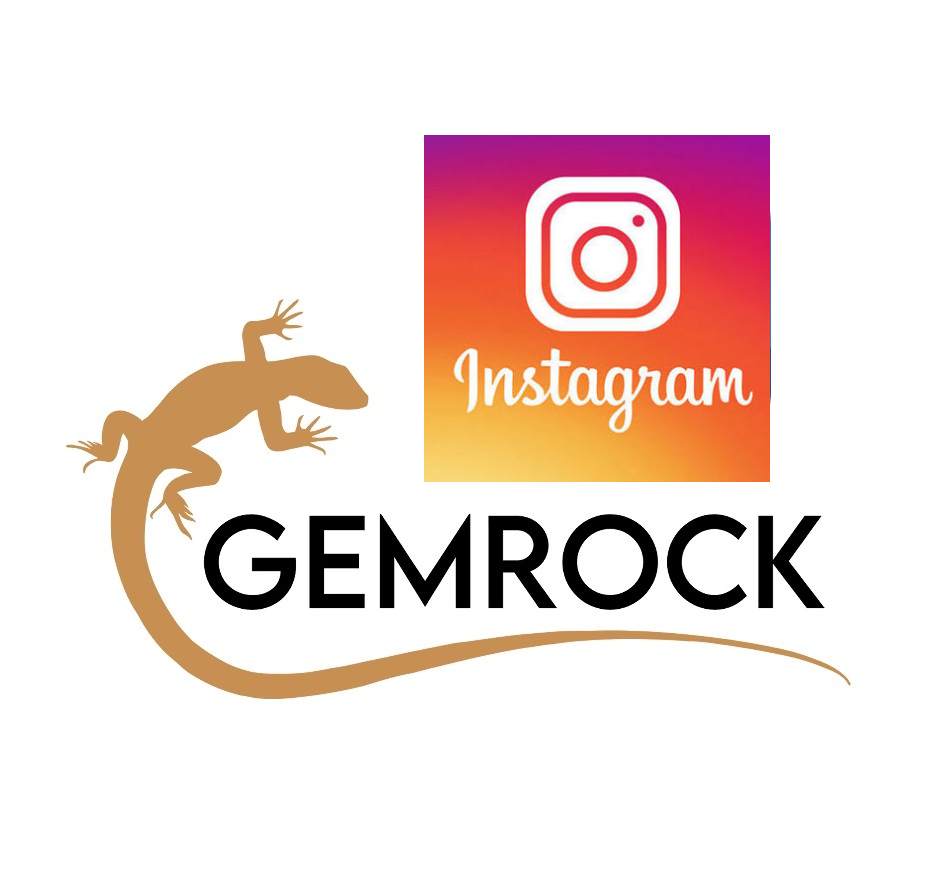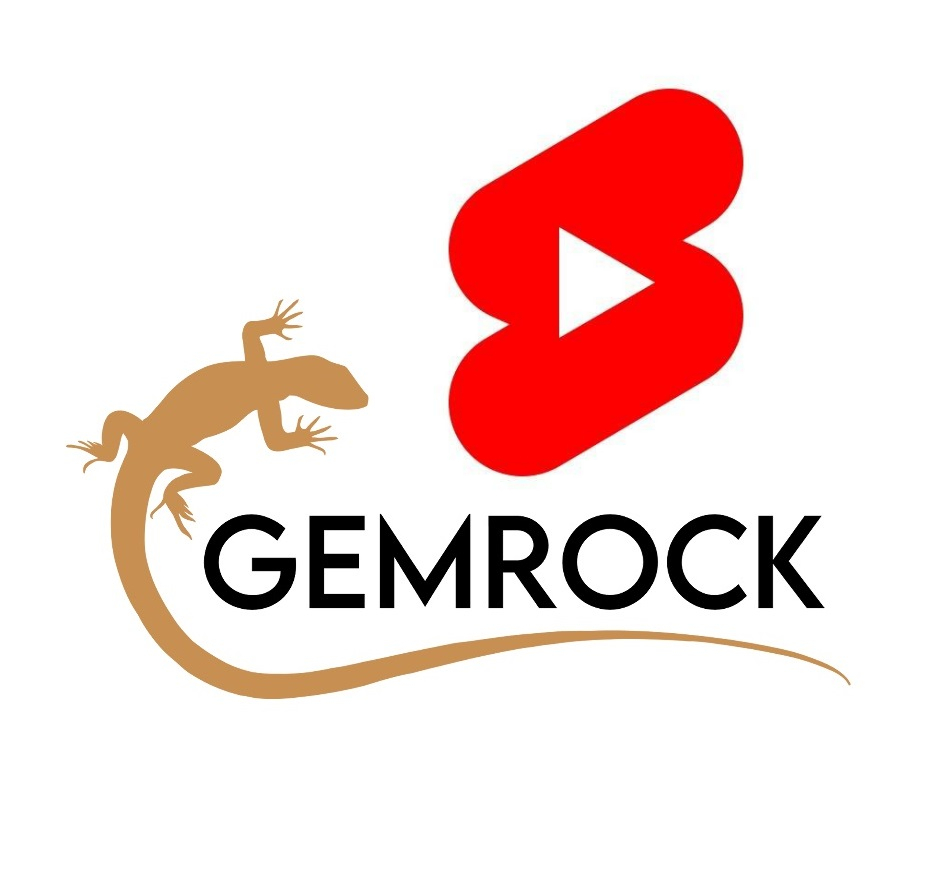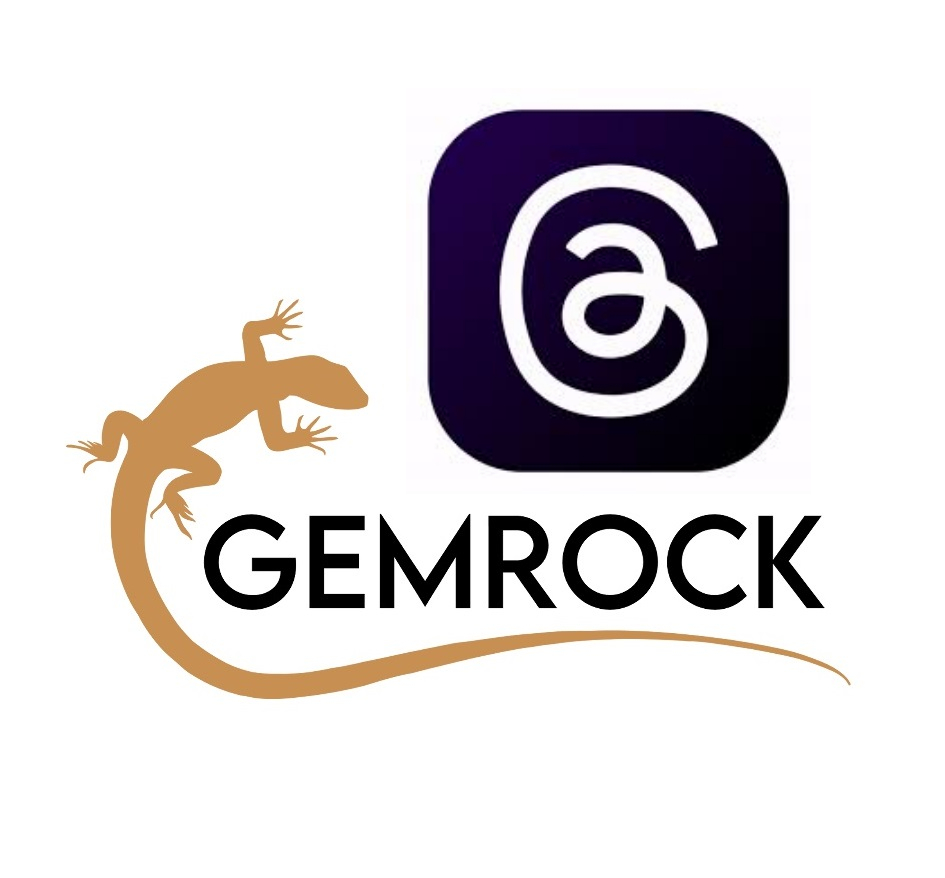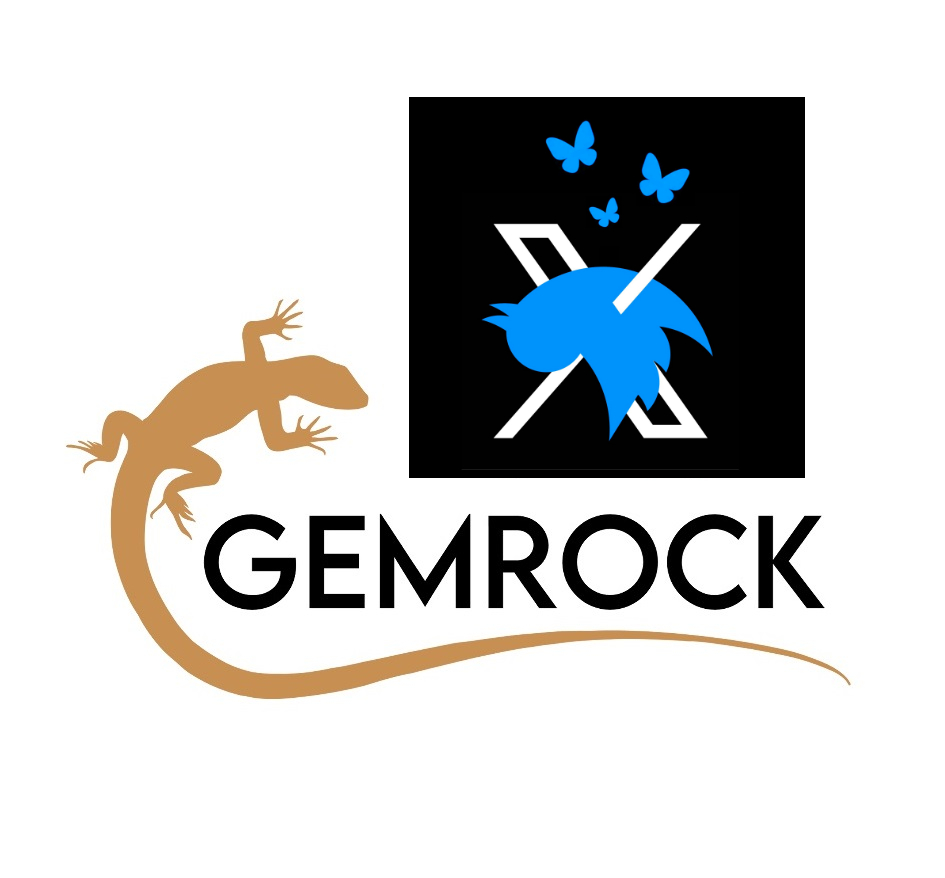Frequently Asked Questions
FAQ: On this page, you will find answers to most of the questions
we are frequently getting asked by our commercial clients.


Shop your crystals & jewelry NOW
NATURA MINERA
Magasinez vos cristaux Gemrock, produits en pierre et bijoux au Québec
GEMROCK CANADA
Online retail shop of ethical, top-quality crystal specimens, jewelry, and jewelry-maker accessories like cabochons, silver chains, silver wire, and charms. Exports to USA.
Gemrock Peru - Tienda
Venta de cristales naturales, piedras talladas y joyería de Gemrock en Peru a nivel nacional.
The Gemrock Group
What is the "Gemrock Group" ?
Gemrock Peru S.A.C. started in 2017 as a small cutting workshop in Peru. We were operating under the brand names “Gemrock Peru” and “Gemrock International”. Over the years we grew and diversified our product lines and became a global wholesaler. We specialized in top-quality ethical crystal products and collector specimens. All our products are produced in-house.
So far we stayed away from bulk wholesale business (quantities of more than 1 ton) because for such large orders, one had to work with so-called “artisan workshops”, which are in fact illegal shadow businesses.
The year 2024 came with new opportunities:
- The Peruvian tax office is finally cracking down on shadow business and we could convince a small number of artisan workshops to become legal businesses and advise them in the transition. In 2023 we made the first test orders to wholesale businesses in India and Europe.
- Our cooperation with a Peruvian jewelry production converted into a strategic partnership.
- Several of our ethical crystal shop clients showed interest in becoming investors.
All this led to a re-organization of our company converting us into a group of companies working together as strategic partners.
2024 – The Gemrock Group
We are now working under the common brand name “Gemrock” while consisting of a group of companies in charge of different product lines or representing us in different countries:
Gemrock Peru S.A.C.: Bulk wholesale business (wholesale to wholesale)
Alvar Peru S.A.C.: Wholesale of ethical crystal products, specimens, and jewelry to crystal shops all around the globe.
Ezra Peru EIRL: retail of gemrock products on a national level in Peru. Owner of brands: Aura and Del Molino Jewelry
Herdel & del Molino S.A.C.: silver and gold jewelry production for Alvar Peru and Gemrock Peru.
Gemrock Canada: Online shop for Gemrock Crystals, carved products, and jewelry in Canada
Natura Minera: Canadian-based crystal and fine mineral business: distribution partner in Canada
Black Lion Crystal Company: USA-based online business for the retail of crystal specimens and jewelry
Alvar Peru S.A.C.
The fact that several of our clients voiced a strong interest in becoming partners and shareholders in Gemrock, made it necessary to create a new company: Alvar Peru S.A.C.
Alvar bought the entire production unit of Gemrock Peru, took over the production staff, and will continue to serve our clients with ethical top-quality crystal products, collector specimens, and ethical jewelry.
Alvar continues to operate under the brand name “Gemrock”; the only change is the billing address.
Alvar will put more emphasis on developing custom cabochon production, jewelry production, and decor product production while continuing to do what we are already good at. By including an international team of business owners from the crystal industry, we can provide an even better service to our global clients.
Alvar Peru S.A.C.
Tax-number – RUC: 20 60 77 321 92
General Manager: Liam Elizabeth Gutiérrez Huamani de Austermuhle
Address:
Av. Los Eucaliptos, manzana G, lote 15
15058 San Juan de Miraflores, Lima, Peru
Phone: 0051 – 99 410 42 06
Email: gemrockinternational@gmail.com
Web: https://www.gemrockinternational.com/
Bank information:
USD account: 0011-0616-0100018461-02
(You pay in USD – do NOT ask for conversion to Peruvian national currency (Soles). If you do that, the bank wire will not go through. You MUST pay in USD)
Bank Name: BBVA Continental
Bank Address:
Av. República de Panamá 3055, Lima 27, San Isidro, Peru
SWIFT CODE: BCON PEPL
In Peru, we DO NOT work with IBAN codes or any other format. We still use the above-written SWIFT/BIC Code
Gemrock Peru S.A.C.
The new Gemrock Peru S.A.C. will concentrate on changing the system from within by helping current artisan shadow businesses become legal.
Gemrock will focus on the bulk wholesale business (wholesale to wholesale, with minimum orders of 500 kg in crystals and carved products and 5.000.- USD in jewelry).
Gemrock Peru will also diversify in offering other non-crystal artisan products like traditional pottery and textiles, for example.
Gemrock Peru S.A.C.
General Manager: Stefan Austermühle
Tax-number – RUC: 20 60 18 504 54
Address:
Av. Los Eucaliptos, manzana G, lote 15
15058 San Juan de Miraflores, Lima
Phone: 0051 – 99 410 42 06
Email: gemrockinternational@gmail.com
Web: https://www.gemrockinternational.com/
Bank information:
USD account: 0011-0616-0100011610-01
(You pay in USD – do NOT ask for conversion to Peruvian national currency (Soles). If you do that, the bank wire will not go through. You MUST pay in USD)
Bank Name: BBVA Continental
Bank Address:
Av. República de Panamá 3055, Lima 27, San Isidro, Peru
SWIFT CODE: BCON PEPL
In Peru, we DO NOT work with IBAN codes or any other format. We still use the above-written SWIFT/BIC Code


All about shipping
Shipping logistics: Companies we ship with
You can organize your shipping with your own shipping agency. In this case please organize the pick up of your goods at our production plant.
If you want us to organize your shipping, please read below:
1.) We are offering you the service of organizing and supervising your shipment FOR FREE. If we give you a quote for shipping, this quote is the exact amount the shipping company charges to us without any money being added by us. We are NOT charging for programming the shipment or any activities related to the pick up at our plant, with exemption of the costs related to heat treatment and sterilization of wooden pallets. For information related to this, please read further below in the chapter related to wooden pallets.
2.) For air freight and smaller orders we are working with DHL, globally recognized professional shipping companies that provide you with the safety of professional shipment handling.
3.) USA-based clients can airfreight on pallets in commercial airlines.
4.) For ocean shipping we are working with a local shipping agency, which has experience with our type of goods and has provided us with the best service we could find in the market.
How much is shipping per kilo
Air freight:
We have a commercial account with DHL. Because we are shipping a lot, the prices we can offer you for shipping are 40 to 50% below the regular prices. Shipping time is globally 3 to 5 business days.
USA-based clients have now the option to include their packages in regular ocean freight shipments to our partners in the USA who will then forward your packages to your location. This takes more time but significantly drops your shipping costs to only a few USD per kilo (Maybe as low as 5-7 USD/kilo). For more information contact us.
How much is air freight exactly?
We wish we could give you a standard answer to that.
There is no flat price per kilo in shipping. Shipping costs depend on:
- Location (country)
- Total commercial value of the order
- Total weight of the package
- Size of the package.
As all four factors are variables, it is impossible to provide you with a shipping cost before knowing what your order looks like.
Additionally, prices are constantly changing as the shipping agent is adapting to fuel price changes and other variables.
Finally, shipping goes up when certain holidays (like Christmas for example) are close and goes down after such events pass.
However, we can help you with some general information:
Click here to see the video
Shipping costs per kilo do not have a linear relation with total shipping weight but an inverse exponential one. Meaning: For small packages, you have very high shipping costs per kilo. As the weight of the package increases those costs per kilo first drop very fast. As the total weight of the package increases further, costs per kilo keep dropping but at a much smaller rate.
So, how could you know how much shipping would be for your order?
We suggest the following:
- Send us your wish list (type of stones, type of products, size of products, and quantity of pieces).
- Having this data, we will get your quote from the shipping agent. We will estimate the size of the package and weight of the package. And having all this data we will get you an estimated shipping quote.
Now you can review everything and decide if you want to order.
Please note. We will provide you with an ESTIMATE. Additionally, the estimated shipping quote will only be valid for three days and might change afterward. Therefore, once we have produced and packed your order and know the real size and weight of the package we will have to make the real shipping quote. Therefore, there might be a small difference between what we estimated and what the real shipping cost will be. We cannot foresee if this will be more or less, but mostly we are talking about very small amounts, because we are quite experienced by now in making our estimates.
If you would like to read in more detail about international shipping costs and how to save money in international shipping we do recommend our blog article “10 ways to tackle expensive international shipping costs“
Why is shipping from Peru more expensive than shipping from Brasil, China or India
Sometimes we have clients who become annoyed about the fact that even if we have a very much discounted shipping price, shipping from Peru is still more expensive than from other countries.
Sadly this is entirely out of our control and we are suffering the consequences of such high shipping costs equally like our clients. We are always trying to improve shipping costs by negotiating better conditions with our service providers, but cannot do more than this.
However, we can provide at least an explanation. There are three main reasons for the high shipping prices from Peru.
1.) Shipping prices from China (and other countries) are so low because they are highly subsidized by their governments in order to promote exports. These subsidies distort the global market and can only be characterized as unfair competition.
2.) We would love to have a Peruvian government that helps its export industry. Sadly the contrary is the case. 70 % of the national economy is cash-based non-tax paying shadow business. Sadly our government is not doing enough to eliminate such unfair competition. Instead, the government charges very high fees to the legal and tax-paying export industry. Therefore Peruvian export costs (customs fees, storage fees, etc.) are amongst the highest fees globally.
3.) Here is what our DHL representative explained to us: “Brazil is a huge economy. In Brazil we (DHL) have 20 planes flying every day full of goods. Peru is a very small economy. In Peru, we have only one plane. This plane flies every day but many times it’s only half full. So the costs of the plane have to be distributed over much less goods and therefore the shipping costs of DHL in Peru are much higher than in Brazil.”
If you would like to read in more detail about international shipping costs and how to save money in international shipping we do recommend our blog article “10 ways to tackle expensive international shipping costs“
Tips on how to reduce your shipping costs
Here is what we are doing to help you reduce shipping costs
- We are always trying to reduce shipping costs by negotiating with our service providers. With DHL we have a commercial account with a 40 to 50 % discount. Additionally, we managed to obtain a second discount on top of the already discounted price for packages below 10 kilos weight. And we obtained an additional case-by-case- discount on all packages above 50 kilos. We will keep trying to get you better shipping prices.
- We are using lightweight packaging materials like bubble wrap. We are aware of the fact that plastic trash is a tremendous environmental problem. Sadly, however, there are no alternative packaging materials available in Peru that would be lightweight and have the same cushioning power. The only alternative packaging material would be paper. But paper would increase the weight of the packages and the shipping costs. And its lower cushioning power would probably lead to higher rates of breakage. Both not being acceptable to our clients. Therefore bubble wrap is currently not replaceable.
Here are 5 tips on how you can reduce shipping prices:
- Make bigger orders: The more you order and the heavier your package, the less you pay per kilo.
- Order at least 5 kilos: In order to help start-up companies and small clients we have managed to obtain a special discount on packages below 10 kilos weight. However, if you make such a small order try to get at least 5 kg of weight as everything below that still has a very high shipping cost per kilo.
- Buy more pieces of the same kind: When you buy more pieces of the same kind, we give you discounted prices. This tip does not reduce your shipping costs. But it reduces the cost of your order and therefore reduces your overall costs.
- Buy smaller pieces: The weight of a stone increases less with its length, but a lot with volume. A heart of 60 mm size has a much higher volume than a heart of 40 mm size and is therefore several times heavier. By buying smaller products you will get more pieces per kilo. The shipping price per kilo will therefore be distributed over more products and this increases your profit per piece and reduces the impact of shipping costs.
- Buy some crystal jewelry: Jewelry does not add any significant weight to your package and therefore does not add shipping cost. If you have a small order (and therefore a small package with a high cost per kilo) then buying 3 to 5 pieces of jewelry is a great way to compensate for shipping costs. Selling those few pieces will make you such a high profit that this pays your shipping cost and results in all your other products coming in for free.
If you would like to read in more detail about international shipping costs and how to save money in international shipping we do recommend our blog article “10 Ways to tackle expensive international shipping costs“
Import Taxes
Shipping costs NEVER include import taxes being charged by customs service in the destination country. Neither we nor the shipping agent can foresee how much a country’s customs service will charge.
Even in very well-regulated countries like Germany import taxes cannot be foreseen. Our German clients, for example, told us that the import taxes charged do vary on a case-by-case basis between 5 and 15 percent with no explanation of what could cause such huge differences. Our clients do suppose that it actually depends on the criteria of each customs official.
Therefore we cannot tell you what you might pay. We suggest reviewing the official website of your country’s customs service to find information that might serve you at least for a rough estimate.
However, there are good news for some countries:
USA: Peru and the USA have a signed and implemented Free Trade Agreement. We were always shipping with a Free Trade Certificate. Clients from the USA did NOT pay import taxes. Sadly, the Trump Administration unilaterally broke the free trade Agreement. Currently, all USA-importers have to pay 10% of the import tax as a tariff.
Australia: Peru and Australia have signed and implemented a Free Trade Agreement. As a Business owner in Australia, you will not pay duties, only GST.
Watch out for HS-Codes
HS codes are internationally used ID codes for product categories. Import taxes are usually determined by the HS code (the product group your products belong to). Therefore, it is very important that your exporter declares the correct HS code. However, an analysis of exports from Peru showed that 60 % of crystal exports are shipped under the wrong HS code, leading to unnecessarily high import taxes. This is because of a lack of knowledge on the side of the Exporters. We work with a customs specialist on our staff to protect our clients from unnecessary tax payments.
Shipping costs related to wooden pallets
When using wooden pallets, those have to be heat-treated (sterilized) to avoid the transfer of insects, larvae, plant seeds, disease, and bacteria from one country to the other.
This treatment is an additional cost for shipping.
We are not charging you:
- for our service to organize your shipping, supervising it, and helping you if there are problems with the shipment on the way.
- for regular packaging material (drums, boxes, paper cushioning or bubble wrap)
- for our time when buying wooden pallets, transporting them to the heat-treatment and picking them up again.
We are happy to help you out with all this.
However we must charge you for the following additional costs:
- Cost of the pallet,
- Gasoline and road tolls for bringing the pallet to the heat-treatment plant and picking it up after the treatment was finished.
- The cost of the heat treatment and the certification.
We will add such costs to your bill.
Free Trade Agreements
We are in the process of adhering to a number of free trade agreements and becoming a registered exporter with them.
Free Trade Agreement of Peru with the USA and with Australia.
USA-based crystal shops never paid any importation tax when buying from Gemrock Peru. Sadly, the Trump Administration unilaterally broke the Free Trade Agreement. Currently, USA-importers have to pay a 10% import tax.
Australian crystal shops will save duties and enjoy slightly lower GST payments when buying from Gemrock Peru.
In 2025 we are aiming for being recognized exporters under the following Free Trade Agreements of Peru with:
- Canada
- Singapore
- Switzerland
- Iceland
- Norway
- European Union.
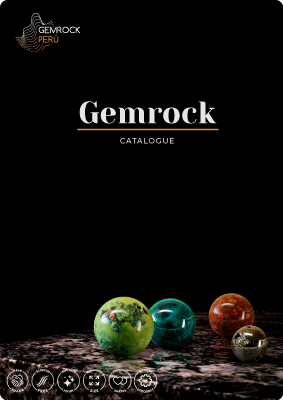
All about payments
Wholesale Minimum Order Amounts
We do not have Minimum Order Requirements for crystal- and other small shops.
Once you are registered with us as a commercial client, you can place orders as small or as big as you want.
However, if you are planning to place a small order, we suggest that your total weight be at least 5 kilos. Although we have discounted shipping prices the price per kilo for packages below 5 kilos still is very high. You will be able to enjoy the biggest savings on shipping if your small orders are between 5 and 10 kilos.
If you have a crystal wholesale business yourself and want to get bulk wholesale prices our minimum order requirement is 500 kg.
Upfront Payments
1.) For orders smaller than 500,- USD we require a 100% upfront payment.
2.) For orders between 500,- and 1.000,- USD we are flexible. We prefer a 100% upfront payment. But if you wish, we will allow you to pay only 50% upfront and 50% when your package is packed and ready to ship. Please keep in mind, that splitting payments will result in additional bank fees.
3.) For orders above 1.000,- USD we require a minimum 50% upfront payment.
After packaging your products we expect the remaining payment plus shipping costs for us to initiate shipping.
Payment Options
Accepted Payment Options
Bank Wire – recommended for all orders above 800 USD
WISE Payment – WISE is an internet platform that allows you to pay with a credit card and then the platform transfers your money via bank wire. This saves you a trip to the bank or a lengthy call to your bank representative. I also avoids in most cases intermediary bank fee charges.
PayMe (also called: ReadyPay) – is recommended for all payments below 800 USD. The 5% payment fee will be cheaper than flat fees from bank wires. You can pay with the following credit cards: Diners, American Express, Visa and MasterCard. In order to pay we will provide you with a payment link.
Cryptocurrency – We only accept cryptocurrency payments in BTC or ETH for the following purposes:
- Donate to our reforestation project in order to make your crystals carbon-neutral
- Pay us to calculate your crystal companies´ carbon footprint.
Not accepted payment options.
PayPal: We are not working with PayPal anymore. Paypal has always been too expensive (charging 8% in Peru). However, in a sudden and unexplained policy change, PayPal now pretends to keep funds for 21 days before making them accessible. This is unacceptable to us.
Western Union – In Peru, Western Union does not offer the option for Peruvian companies to receive payments. It only works for private people.
All about Bank Wire Payments
What´s better, bank wire or percentage-based credit card payments with services similar to PayPal?
For wire payments, the banks charge flat fees, independent of the amount being wired.
This makes bank wires more expensive for small amounts to be transferred. Therefore we do recommend using PayME from ReadyPay for all payments below 500.-USD.
For amounts bigger than 800.-USD bank wires are always cheaper than PayPal. We therefore do recommend bank wire payments for bigger amounts.
An alternative to bank wires is the payment platform WISE, which allows you to make a credit card payment with a very low flat fee and then converts this payment for you into a bank wire.
Who pays the bank fees?
We are expecting you to carry the bank charges of your local bank. Do not charge those fees to us. This would result in us asking for balance payments which will cost you additional bank charges and will delay the dispatch of your goods.
Be aware of the fact that your local bank may use intermediary banks to transfer the money to Peru, but may not tell you about this in advance. If that happens we will not receive the full amount and will ask you for balance payments. This will not make you happy. Please read in the next chapter below about intermediary bank fees and how to avoid them.
Watch out for intermediary bank fees
Not all local banks have a direct link to banks in Peru. Many work with intermediary banks. Many banks in the USA, for example, use Morgan Chaise Bank as intermediary.
In this case your local bank wires the money to another bank and this intermediary bank wires the money to the Peruvian bank.
This procedure may result in a problem:
By law, your local bank is obliged to make you aware of the fact that they will use an intermediary bank, which will charge additional bank fees.
In practice however, we have seen many cases where local banks do charge our clients a small fee of the local bank, but do NOT tell them that they will use an intermediary bank. This intermediary bank will then charge a quite huge fee of 60.- to 120.- USD to OUR account and your money will not arrive complete.
Please be aware of the fact, that the decision to use an intermediary bank, is the decision of your local bank. We have no influence on that. Therefore those fees are on your side. We cannot foresee, if such fees will be charged and we cannot and will not carry such fees.
Therefore, if this happens, we will write you and ask for balance payments. Then you will also have to carry the additional fees. We know, that this will not make you feel happy.
Therefore, in order to avoid such inconvenience we would like to advise you to always ask your local bank specifically if they will use intermediary banks and how much will be the fee. Do not trust that your bank will tell you by their own initiative.
If your bank tells you that they will use intermediary banks, you have two options:
- Choose another bank for your transactions that has direct connections to Peru and does not use intermediary banks
- Tell your local bank that you will carry intermediary bank fees and that those fees should be charged to your bank account, not the recievers bank account.
Bank Information for wire payments to Alvar Peru SAC
Alvar Peru S.A.C.
Tax-number – RUC: 20 60 77 321 92
General Manager: Liam Elizabeth Gutiérrez Huamani de Austermuhle
Address:
Av. Los Eucaliptos, manzana G, lote 15
15058 San Juan de Miraflores, Lima, Peru
Phone: 0051 – 99 410 42 06
Email: gemrockinternational@gmail.com
Web: https://www.gemrockinternational.com/
Bank information:
USD account: 0011-0616-0100018461-01
(You pay in USD – do NOT ask for conversion to Peruvian national currency (Soles). If you do that, the bank wire will not go through. You MUST pay in USD)
Bank Name: BBVA Continental
Bank Address:
Av. República de Panamá 3055, Lima 27, San Isidro, Peru
SWIFT CODE: BCON PEPL
In Peru, we DO NOT work with IBAN codes or any other format. We still use the above-written SWIFT/BIC Code
Bank Information for wire payments to Gemrock Peru SAC
Gemrock Peru S.A.C.
General Manager: Stefan Austermühle
Tax-number – RUC: 20 60 18 504 54
Address:
Av. Los Eucaliptos, manzana G, lote 15
15058 San Juan de Miraflores, Lima
Phone: 0051 – 99 410 42 06
Email: gemrockinternational@gmail.com
Web: https://www.gemrockinternational.com/
Bank information:
USD account: 0011-0616-0100011610-01
(You pay in USD – do NOT ask for conversion to Peruvian national currency (Soles). If you do that, the bank wire will not go through. You MUST pay in USD)
Bank Name: BBVA Continental
Bank Address:
Av. República de Panamá 3055, Lima 27, San Isidro, Peru
SWIFT CODE: BCON PEPL
In Peru, we DO NOT work with IBAN codes or any other format. We still use the above-written SWIFT/BIC Code
All about PayPal payments
We are currently not working with PayPal. In a sudden and unexplained move, the company pretends to keep our funds for 21 days before making them accessible. We can not accept this. We are talking to the company in order to find out why (after moving major amounts for five years without a single consumer complaint) Paypal is making this move.
Until PayPal changes this unilateral policy change we are not working with the platform.
And then there was the "great idea" on how to trick out the government
Nobody likes to pay taxes, fees, commissions, etc. We agree.
Nevertheless, governments have become pretty smart in detecting all those nice little tricks that we used in this industry for many years to save some money. So before you come up with one of those questions and suggestions please be aware of the fact, that:
- We cannot lower the price of our goods on the export document in order to save you import taxes. The Peruvian export bill is the official document that goes to the Peruvian tax office. The tax office then compares what’s coming into our bank account with what’s written on the export bill. If there is any difference this automatically results in more than 1.000,- USD fines for us. So: NO we cannot do this
- We cannot receive a payment to our private bank account and then send goods to you with an export bill that shows a lower price. This would result in the same problem as above. So: NO, we cannot do this either.


All about how we do package our wholesale products
Reused packaging materials
Environmental protection is a key value of the companies in the Gemrock group.
We are probably the world´s only crystal company that has measured its carbon footprint, which in 2021 was 49.53 to CO2 emissions. We are now engaging in taking active measures to keep reducing this carbon footprint year by year.
One of those measures is to reuse packaging material from other companies. Reusing is different than recycling.
Recycling means turning an item into raw materials that can be used again, usually for a completely new product. This is an energy-consuming procedure. And all too often the recycling process goes along with the production of chemical contamination and waste production.
Reusing refers to using an object as it is without treatment. If you reuse an object, its carbon footprint is zero because it actually was already used and otherwise would have become garbage. In Peru, there is an entire local market where you can buy objects that can be reused. It is in this market where we are regularly buying most of our packaging material, like boxes and wooden pallets.
We are aware of the fact, that our packaging does not look pretty. It may even look very unprofessional and strange to you to receive your wholesale order in packaging material that very obviously has been fabricated to transport fruits, electric parts, or other products and shows the logos of other companies. However, by reusing these materials we are completely avoiding the production of new packaging materials as well as the negative consequences of recycling used materials. Protecting the environment is more important to us than looks.
Therefore part of the cushioning material used inside the boxes is reused material too, be it bubble wrap that is still good enough to be used for a second trip or printed paper that is used to protect your products. Crystal specimens need a lot of cushioning, so we are using large amounts of toilet paper to pack them, meaning we have a huge amount of toilet paper cores, those being a great material to fill empty spaces within packages. That´s why you may find them in your box.
As you can see, there is a method to our madness.
If you want to learn more about our effort to protect the environment and implement ethical mining and production, please read our Sustainability Report 2021.
Also, we are the world´s first crystal company offering you to buy carbon-positive crystals.
And finally, if you wish to measure your companies´ carbon footprint, we can help you with that.
Bubble wrap - our challenge
Crystals are products that tend to break easily.
Sadly, in Peru we have no access to alternative packaging materials that have the same protective success than bubble wrap. All these great new alternative packaging materials made from recycled paper, mushrooms, seaweed etc. etc. are not available in Peru. If we wanted to import such materials, this would greatly increase shipping costs, which is something the regular consumer simply would not be willing to accept.
So here in Peru it comes down to newspaper or bubble wrap. But newspaper just does not have the same cushioning power as bubble wrap and using it would greatly increase breakage during transport as well as it would increase the weight of the package and therefore again shipping cost.
What you can do to help us
If you want to learn more about our effort to protect the environment and implement ethical mining and production, please read our Sustainability Report 2021.
Also, we are the world´s first crystal company offering you to buy carbon-positive crystals.
And finally, if you wish to measure your companies´ carbon footprint, we can help you with that.
Packaging your crystals safely for a long trip
We try our best to pack your products in such a way, that no damage may occur. In order to do so we are using a lot of cushioning materials like bubble wrap and reused paper.
However, once the package leaves our production plant and is in the hands of the shipping company we have no control over the way the package is treated by the shipping company, by the Peruvian customs officers, or by the customs officers in your country.
We cannot be held responsible for any product damage when you open the package and we will not refund money for damaged products.
Therefore: insurance is highly recommended
Please read all about insurance, its cost, and coverage at the end of our chapter on “shipping“.
The other way you can add additional protection to your materials is ordering Deluxe packaging, please read below.
Deluxe packaging
Just once we had to deal with a client who was complaining constantly about shipping prices, to a level where she wanted to save on shipping weight by discarding our proposal to use wooden reinforcement for her package of high-value crystals. Also, she rejected our suggestion to buy shipping insurance. As destiny wanted, some of her crystal products did arrive damaged as we had foreseen. Now she was angry and complaining about our supposed “bad packaging“. We only could say “Sorry, but we warned you that packaging is the wrong way to save shipping costs“.
Based on this experience we now always include insurance in our shipping without even asking our clients. Additionally, we are offering you the option to hire “Deluxe packaging”.
By using the word “deluxe” we are not referring to an especially beautiful packaging. We are referring to extra safe packaging, where we will employ additional effort to make our good packaging even stronger. We do this by using double corrugated cardboard boxes made from recycled paper or by adding internal compartments or wooden reinforcements to your package. This means we also will employ additional labor time to pack your materials, Therefore Delux packaging will come with a small extra fee.
We will suggest such packaging especially when you are buying high-value crystals or crystal products that have a higher tendency to break than others.
Packaging your products this way will add weight and therefore shipping costs to your order. Therefore we will offer such super-safe packaging as an option. It is up to you.


All about damaged goods, return and refunds
Transport Damage - who is responsible?
We apologize if any items you received were damaged during shipment. We try our best to pack in such a way, that no damage may occur.
However, once the package leaves our production plant and is in the hands of the shipping company we have no control over the way the package is treated by the shipping company, by the Peruvian customs officers, or by the customs officers in your country.
Therefore we cannot be held responsible for any product damage when you open the package.
We will not refund money for damaged products.
Therefore, we are always including 100% insurance against loss or damage in our shipping quote to you. Please read in the next chapter all the recommended unpacking procedures in order to be able to file for insurance.
Insurance: cost and coverage
We always include 100% insurance against loss or damage in our shipping quote to you.
Cost of Insurance
The cost of this insurance is a flat rate of 13.5 USD + tax for all shipments with a value of up to 1350.- USD.
For shipments with higher value, DHL charges 1% of the product value + tax.
Coverage
If your products are not insured and get lost or damaged DHL only covers 25 USD per kilo and a maximum total of 100 USD.
If your package is insured DHL covers 100% of damaged goods or 100% of the lost package.
The insurance DOES NOT cover any damage that was caused by customs officials in Peru or in your country. We did have once a case where a Peruvian tax official opened a package and apparently tried to find out if there were drugs within our polished pink opal hearts. In order to do so, he apparently used a hammer and chisel to open the hearts. Of course, the tested pieces became a total loss. Luckily we never ever again had a package being analyzed by the same very intelligent customs officer. And luckily DHL covered the damage even if the package was not insured and even if they would not need to cover such damage. But one should not rely on that. Better insure your package.
Recommended unboxing procedure
- Upon the arrival of your package immediately review it for suspicious damage on the outside of the package. If you note any signs of damage on the outside of the package, please immediately ask the delivery person to hold the package in his/her hands with the damages visible and take a picture of the package and the person. This way you can document the state of the package upon arrival. Do this before signing off the reception of the package.
- If you can note any suspicious damage on the outside of the package then do make a lot of pictures documenting your unboxing process. Make pictures of the inside of the package and of each product before and after unpacking it.
- Make close-up pictures of the damage to crystals and crystal products.
- Inform us about the damage. We will send you a damage report form. Please fill it out and adhere the pictures.
- We will then file the insurance case for you (for free) and will keep you updated on the result.


All about product quality
What are the quality criteria at Gemrock Peru
We are operating under five main quality criteria:
- Perfect shape: Our hearts are perfectly shaped hearts that look like hearts and not like triangles with a small cut in them. Our spheres are perfectly round and do not wobble when turned fast. Our pyramids and obelisks are perfectly shaped geometrical bodies with crispy sharp and straight edges. Our cabochons are perfectly cut cabs.
- Uniform size: our products have standardized sizes and variations are very small (2 mm more or less at maximum).
- Perfect polish: Not all stones polish alike. However, we are offering you for each stone the absolute best polish possible for it, in all the pieces you get.
- No scratches: We have extremely strict quality control where we look at our products with a magnifying glass to detect scratches and the smallest unpolished spots. If those are detected, the product goes back into the production line to be improved.
- Material quality: From 2024 on we will apply a set of rough rock quality criteria for all our stones. These criteria will allow us to select only the best rough rock material for our products.
If there are holes in any of our products, those holes are natural holes and drusis which are part of the stone and have not been caused by us.
Our basic guideline for quality approval is:
If the product is so beautiful, that we rather would like to keep it, than selling it, it has the right quality for being sold.


All about picking your products and color grading in stones.
What is color grading
Colors are personal taste. Therefore grading colors is very difficult and in some stones, it is a hotly debated quality criterion where finding common ground may be difficult.
Therefore we are dedicating this chapter to providing you with the opinions we have about this topic and with the rules we do apply to this topic. Please read this chapter, so that we can find such common ground.
Stones where color grading is not an issue and why its not.
There is a long list of stones with a uniform coloring or color pattern where color grading does not occur. Therefore these stones give no reason for disagreement. Such stones are:
- Apatite
- Atacamite
- Caramel Calcite
- Red Aragonite
- Coati Aragonite
- Black Tourmaline in milky quartz
- Black Tourmaline in clear quartz
- Epidote (rock)
- Semper Fi
- Hematite
- Serpentinite
- Epidote and Axinite
- Epidote in orthoclase
- Rhodonite with green epidote
- Green Jade
- Huanucite
Do not expect to get the same color pattern for a second time from these stones and crystals
Some of our clients are not yet aware of the following facts:
There are some crystal types that are actually much more rare than gold or diamonds, even if our society does not appreciate or value it this way.
Actually, gold is not rare at all. It can be found anywhere in the world and once it is made into a gold bar you cannot tell where it´s coming from.
In stones and crystal specimens, this is not a fact. Many mineral mixtures, stone types, or crystal specimens occur in very small reserves in only one spot in the world, where they form under very specific conditions. Specialists like us, who deal in such rare types of crystals or rough rock types, can identify a specific mine or mineral vein just by looking at a polished product or a crystal specimen.
In such cases, one must be aware of the fact, that certain color patterns will change over time even within the same mineral vein according to the depth the mining operation reaches. Also, veins may suddenly cut off and never appear again.
Therefore:
There are some crystal types where shapes and color patterns may change over time and never be the same again.
- There are some crystal types where existing reserves are very small and suddenly that particular shape or color pattern does not exist anymore.
- When something like this happens, the price for the remaining crystals with the same color pattern or shape will rise very fast and very steeply and you might be shocked about the price increase for such a crystal from one order to your next order. When that happens there is nothing we or you can do about it, other than decide if the product still is worth the price.
In general terms, the common history of such materials is the following:
- In the first stage, a new color pattern or shape appears on the market and is sold very cheaply to introduce it into the market and make it known
- In the second stage demand for such a shape or color pattern may pick up and the price may rise a little, but still stays cheap.
- When demand is high and the stone starts getting rare in the mine, prices will start rising ever faster and steeper.
- Finally, there will be only a few remains of crystals or rough material, which are now offered for such a high price that polished products such as rough stone would only be used for cutting jewelry (cabochons), and in crystals it´s the fine mineral dealer, who would sell such crystals to a very wealthy collectors niche.
Stones and mineral types in Peru with such a foreseeable future of becoming rare or disappearing are:
- Most of the crystal specimens
- Chrysocolla (in all its variations of color patterns)
- Pink Opal
- Manganocalcite
- Peruvian Rosophia
- Apatite
- Atacamite
- Epidote and axinite
- Epidote in orthoclase
- Chocolate calcite
Therefore, we are providing you with the following advice for buying those crystals:
- DO NOT EXPECT to be able to buy a certain color pattern or shape of one of those stones again in the future. If you like a certain pattern, then buy as much as possible of it and stock up as long as it is available. Because it will disappear and then your stock can be sold at a much higher price point.
- DO NOT EXPECT to be able to buy such crystals or polished products again for the same price. Price will necessarily rise over time and it will rise a lot. So again, buy a lot of this material as long as the price is low and stock up.
Let us give you a simple example:
There are certain color patterns in Chrysocolla that we could buy six years ago for 10 USD the kilo as rough material. The remaining historic material (no new material of this color pattern is being mined anymore) is now sold for up to 400.- USD per kilo rough. If you had stocked up this material six years ago, the value of your stones would have risen by now several thousand percent.
Color grading in Chrysocolla
Chrysocolla is always a mixture of several minerals, like chrysocolla itself (cyan to electric blue), malachite (green), azurite (dark blue), tenorite (metallic black), cuprite (reddish brown), and limonite (yellowish). It is also often mixed with white milky quartz or silver-colored metal concentrations. Sometimes there is a lot of lime in it or it´s mixed with brown mother rock.
Color patterns and combinations change from vein to vein, even on the same mountain flank. They change even within the same vein according to the depth the mine reaches.
Any color pattern will eventually (and often very fast) become completely exploited and unavailable.
So, never expect to get the same color pattern for a second time or the same price again.
The only things you can do, are:
Buy as much as possible from a certain color pattern you like as long as it´s still available and affordable. Stock up, because you know now it will disappear and increase in value.
Adapt to a constantly changing offer of color patterns on the market.
Don´t complain about a certain color pattern being unavailable, because there is nothing we could do about it.
Color grading in Pink Opal
Pink Opal is one of those stones, where personal taste makes the price and where prices go crisscross because of different color tastes. Some of our clients do insist on the existence of some kind of industry grading standard that does not exist in a written document but is a commonly agreed opinion, according to them. We allow ourselves to have a different opinion.
First of all Peruvian Pink Opal is very rare and can only be found in a small coastal desert area between the cities Pisco and Ica.
American and Australian pink opals get their color from the presence of manganese. Pink Opal from Peru, however, gets its color from inclusions of the silicate mineral palygorskite as well as some organic compounds, called “quinones”, often found in plants and that enter the stone during formation.
Pink Opal veins are very small and range in thickness between half a cm to a maximum of 5 cm. Sometimes there are bubbles that may reach 30 cm of thickness but that’s extremely rare.
In general terms, we can say that the thin opal veins show a more uniform coloration and a deeper rose or pink color. The thicker the vein becomes, the more other colors are mixed in, and the more color layers the material does show. The coloration may range in shades from pastel pink to bubblegum pink. Also, other colors are frequently displayed in color zones or stripes. The colors you will typically see appear are white, black, peach, and sometimes yellow. Similarly, some pink opals can take on a lavender hue.
Representatives of the industry standard theory argue that mixed colors are the lowest grade material and that the quality grade of the material does increase with the saturation and intensity of the pink color, as well as with the level to which the color becomes uniform.
Even if that sounds like a logical approach, sadly it is not true. The most intense dark rose-colored uniform color IS NOT the most valuable one to many people (we do disagree with that too). It’s in fact much cheaper than the so-called “Piel de Angel” (Angels’ skin) color which is a much softer rose color, similar to a strongly colored rose quartz. This material can cost up to 2000 USD per kilo rough material in some cases (again prices may vary tremendously for that tone, depending on who is your source for the material and what you are willing to pay).
The same is true for the criteria of variation in colors. There is a kind of Pink Opal that comes as a thicker vein and shows a lot of small layers of all kinds of color shades. To many people, this material looks much more attractive than a uniform-colored pink opal and it´s in high demand. Sadly this material has become now very rare, so the price for this material is rising, even if according to the “industry standard” guys that should not be possible.
Finally, the white and pale Pink Opal as well as the lavender colored one, often show the irregular appearance of dendritic brown or black inclusions. According to our “industry standard” guys, this material would not be worth a lot. However, it is a material in high demand for making beautiful cabochons.
In summary: Pink Opal is not color-gradable. Its price depends on what you like personally, what you are looking for, what´s available at a given time, and what you are willing to pay for it.
The only things you can do, are:
- DO NOT EXPECT to be able to buy a certain color pattern again in the future. If you like a certain pattern, then buy as much as possible of it and stock up as long as it´s available. Because it will disappear and then your stock can be sold at a much higher price point.
- DO NOT EXPECT to be able to buy a certain pink Opal color pattern again for the same price. Price will necessarily rise over time and it will rise a lot. So again, buy a lot of this material as long as the price is low and stock up.
- Adapt to a constantly changing offer of color patterns on the market.
- Don´t complain about a certain color pattern being unavailable, because there is nothing we can do about it.
Color grading in Peruvian Quantum Cuatro
Peruvian Quantum Cuatro is a very different story than Chrysocolla or Pink Opal. It actually comes from a single huge quartz body on a single mountain. It is not a vein with a relatively uniform coloration pattern. Instead this huge quartz body is a completely cracked material that requires special knowledge when cutting it, so it does not fall apart completely. Those fine microscopic cracks have been infiltrated by chrysocolla, malachite, limonite, and brown oxide layers with give the quartz body its incredible and very unique color pattern.
Of course, we understand that everybody looks for the most colorful parts of the material. However, the reality in the mine looks very different. 90 percent of the rocks coming out of the mine are not very colored but instead, it´s clear or milky quartz with a soft hue of color. Only about ten percent of the material is colorful, at least it appears like that at first sight.
Of course, we are trying to preselect only the colorful material when buying rough in the mine. However as this is NOT a vein with a distinct color pattern but a huge irregularly colored body of quartz, even if we select a rock according to the colors it shows on the outside, the reality of this rock will come to light once we cut it open. There is no way for us to know for sure how a stone looks inside. Even in the most colorful-looking rocks, there are whitish parts with pale colors inside.
Another problem is that the strength of the color comes from the thickness of the stone which is filled with those microscopic layers of color. This means, that when you cut a seemingly colorful stone into smaller objects, the supposed strong coloration will fade. So making a colorful worry stone or tumbled stone or palm stone out of the very colorful rough material is a game of luck.
Given all these problems we are grading our material as follows:
- Low grade: the rather pale and clear quartz rocks and polished products
- Mixed grades (or mine run): we cut the stones at random – in your lot will be a fair number of rather whitish or pale-colored material and some colorful pieces.
- High grade or Premium: For producing this material we will choose only the most colorful-looking rocks. Nevertheless, we need you to understand and to accept that even when cutting the most colorful 10 percent of the material, not all of the products resulting may not look super colorful, especially not when you are ordering small or thin products like worry stones, palm stones, or tumbled stones. It is impossible that your entire lot of products look like the one or two pieces shown as examples on our website. You will always get a range of color intensity. We need to emphasize this, so it becomes clear to our clients that receiving a range of coloration patterns is not a case of fraudulent promotion on our website. And we will not refund money just because you think all your pieces in a premium grade have to be dark green and blue. However, very pale colored objects are an exemption within a premium grade, but they are possible.
We are flexible people, so if you see on pictures that we will send before packaging a few pieces in your premium grade that you don’t like, we are happy to exchange them. However, if your picking choice discards too many pieces we will ask you for a 30 percent higher price even on the already expensive premium grade.
Pyrite specimen quality grading
Many of our clients are unaware of the quality grading system of Pyrite crystal specimen.
Pyrite quality and price are NOT determined by the size of the stone (or cluster), but by the size of the crystals on it and by the level of damage on the small single crystals that are making up this cluster.
The grading according to crystal size is as follows:
- Quinoa pyrite – Pyrite with many druses and covered in the smallest crystals. Quinoa pyrite shows 1 mm big crystals.
- Chispa pyrite – Chispa has a majority of crystals in the 1-3 mm size range.
- Top spark (Chispa resaltada) – Pyrite with many druses and covered in small crystals of an average size of 3 to 6 mm (comparatively the size of a rice grain).
- Regular Cocada – Pyrite with many druses and showing a high number of crystals of an average size of 6mm to 1 cm. Not all the crystals on the rock have to have this size. Many times bigger crystals are surrounded by crystals the size of spark or highlighted spark.
- First-class Cocada – Pyrite with many druses and covered in crystals of an average size of 8mm to 1.5 cm
- Cubes – Crystal size 2 a 5 cm. This size class and higher are commonly sold as crystal collector’s pieces.
- Massive Pyrite – “Massive pyrite” in fact is the interior of big broken Pyrite cubes. The cubic pyrite crystals are grown masses that have no druses inside. They are sold in minimum sizes of 3 cm diameter that compare to a small Peruvian lemon. Massive Pyrite is comparatively rare and therefore sold at higher prices than pyrite with druses and small crystals.
An additional grading based on the level of damage divides the bulk material from the collectors´ material.
The first two of the above-listed quality classes (quinoa and chispa) are only classified as bulk material and are the two quality levels that are most commonly used for the cutting of polish pyrite products.
For all the following quality levels (Chispa resaltada (Top spark) to Cubes) there is a bulk quality and a collectors´ quality.
The bulk quality in each level is characterized by showing only one or two faces (sides) of the cluster with good crystals while the other sides might show break-off surfaces or be highly damaged. If the entire cluster shows crystals on all sides then many of the crystals in the bulk material are damaged.
In a collectors class, nearly the entire cluster is covered on most of its sides in beautiful undamaged crystals.
Prices for the material are much higher for the collectors’ class than for bulk material. Collectors´ class is sold by us in small presorted flats and clients have to visually choose their flats in video conferences. Prices are individually fixed for each flat.
Bulk material is sold by the kilo at a much lower price and packaged without the client reviewing the material.


Miscellaneous – all the other stuff you might want to know
Why do you charge by unit and not by kilo?
Price per kilo is the usual wholesale pricing scheme in the global crystal and lapidary industry. We are aware of the fact, that by charging our clients per unit, we are swimming against the current. Sometimes we even lose a possible client, just because we are not providing prices per kilo. So, why are we insisting on pricing by unit?
Because it has clear benefits in comparison with pricing by the kilo:
- It avoids misunderstandings and disagreements between wholesalers and commercial clients.
- It is providing a fair pricing system.
- It provides a better consumer experience for our clients.
- It makes your retail pricing so much easier.
Contrary to common belief, smaller products do not require less raw material and less labor effort, but more.
Producing a kilo of smaller products results in a bigger amount of waste than producing a kilo full of bigger products. Also, the resulting stone waste consists of very small pieces, which cannot be used for another product. So actually, producing a kilo of smaller products has a higher raw material cost than producing a kilo of bigger products.
It is correct that the labor costs of a small product are generally lower than the labor costs for a big product. However, this does not mean that making a three-centimeter-wide stone heart takes only 50 percent of the time it takes to make a six-centimeter-wide heart. As a common rule for our cost planning, we are calculating that reducing the size of a product by 50 % will only result in an estimated 25 % reduction in labor cost. This means, that making two hearts of three-centimeter size, will have a labor cost that is 1.5 times the cost of making a six-centimeter heart.
As you can see from our example, the production of a kilo of small products requires not only a bigger amount of raw material it also requires a higher amount of labor. Therefore, in a pricing system based on a price per kilo, the producer will try to sell a kilo of big products, to have a lower cost of material and labor and increase his profit. The buyer, on the other hand, benefits more from a kilo of smaller products, which he can sell at a higher profit margin than bigger products. As we can see, in a kilo-based pricing system producer and buyer have opposite interests, which can lead to disagreements and disappointments.
Some argue that when they order per kilo they would demand a size range (for example 5 to 6 centimeters in size) in order to avoid this problem. However, would that really mean, that all 6-centimeter hearts have the same weight?
Absolutely not. A thick bulky stone heart can have double the weight of a thinner flatter crystal heart of the same width. With this, we are back to square one. As a producer, I will try to fill my kilo with a small number of heavy and bulky hearts. While, as a buyer, I will be interested in obtaining a higher number of less bulky and lighter hearts.
In other words, in a price-per-kilo-based system, there is a high probability, that one side loses, as long as the kilo price is independent of the size and shape of the products contained in it.
Either the producer has little profit if he is forced to offer a lot of small light hearts in a kilo. Or the buyer has little profit if he receives a few big and bulky stone hearts.
The only way to establish a clearly defined pricing system, that is fair for both sides and avoids misunderstandings and disagreements, is to switch to a price-per-unit system with clearly defined and standardized product shapes and sizes.
Only such a system allows the producer to pay fair salaries to his workers by exactly calculating raw material costs and labor costs and offering a price that guarantees him a fair profit.
Only such a system benefits you, being the buyer, by providing you with exactly the number of items, with the right size and shape that you ordered. There won’t be any bad surprises. There won’t be any disagreements with your provider:
You will pay a fair price for your goods and your mind will be at ease with the fact, that by buying this product, it is less likely that you are supporting abusive labor conditions for lapidary workers.
Charging by the kilo leads to abusive labor conditions and low product quality.
The provider is forced to produce a large number of small products per kilo at a low price per kilo. In this case, he can only increase his profit by producing faster. This would result in lower quality. Or by paying lower salaries, which results in abusive labor systems.
Additionally, there are more benefits for your crystal shop:
When buying standardized products in a price-per-item system:
- you will know exactly how many pieces you will get, and at which price per item. This will make it much easier to already know what your correct retail price per piece is when you place your order.
- by knowing what the fair wholesale price per unit is, your final pricing will reflect an important fair-trade principle: Fair prices
Why can’t I reach you by phone or email?
If we are not immediately answering your emails, your WhatsApp or Telegram messages, your Instagram, Facebook, or TikTok message,s or your phone call, please have in mind the following possibilities:
- We just may be overwhelmed with answering messages on all those channels and will answer you as soon as possible.
- We are pretty much used to working 24/7 because we have clients in so many time zones all around the world. However, we still need to sleep a few hours per day. So it might be, that we are just unconscious for a short while and will get back immediately after overcoming the morning-zombie-head with a cup of strong coffee.
- A few weeks ago we made a decision to rest on weekends – at least at some of them. So it might be, that we are in one of these no-contact-weekends and will answer you as soon as Monday strikes again. Please keep in mind that your Friday can be our Saturday or your Monday may be our Sunday (Time-zones!)
- We might be travelling in the Peruvian coastal desert or in the Andes to visit mines and buy rough rock or crystals. If that happens we might be out of internet access for even a few days. Please have some patience. While travelling we will review our email and other channels whenever we have internet access and will at least send a sign of life.
If you should not get an answer from us for more than a week, something went wrong. Your message may have ended up in some spam box or something else happened. In this case, please do insist and try again. At best, try again via different channels. As soon as we get your message we will get back to you.
Why should I sign into your newsletter?
If you submit your email address to the newsletter, you will be notified immediately when new types of stones or new products are added to our site. You will be informed about the gem shows we are participating in and you will be notified of special offers.
This means you get the jump on the casual visitor. Only those on the email list get the opportunity to see the products first and that may be the difference between getting the product or crystal specimen lot you want or losing out to another customer.
I do not see what I am looking for, do you have other products available?
We are continuously producing new products.
We find it impossible to keep this website updated immediately and all the time. So there are always some products in stock that you cannot find yet on the website.
If you are looking for something special that you cannot find on this website, please contact us. We are happy to help you if you tell us what you are looking for. We may have it in stock.
If there is a type of product we are not yet producing we are happy to try to develop and produce it, especially for you as a custom-made product. Just provide us with a sketch or a picture and we are happy to talk about it.
If there is a type of crystal we are not offering currently, please let us know what you are interested in it. We are happy to keep our eyes open looking for it.


Free Gemrock Learning Resources
Free Gemrock Learning Resources
Connect wherever you want and can
Connect wherever you want and can
Get in Touch
+51 994104206
gemrockinternational@gmail.com
